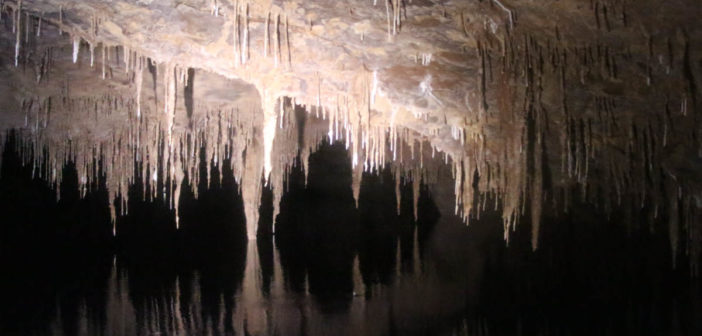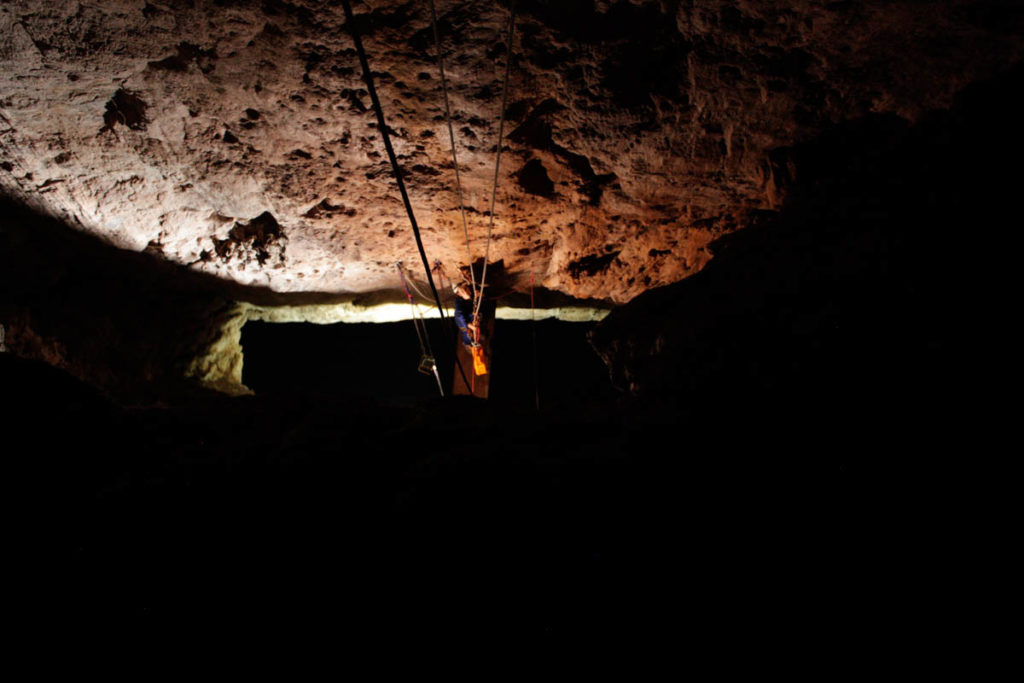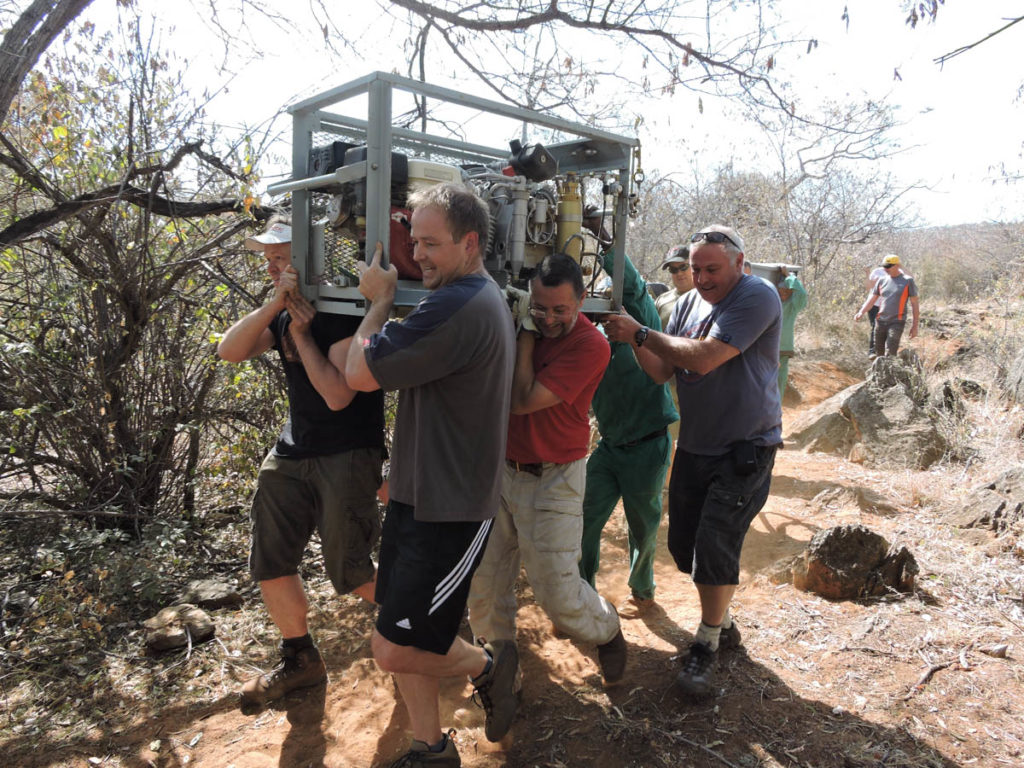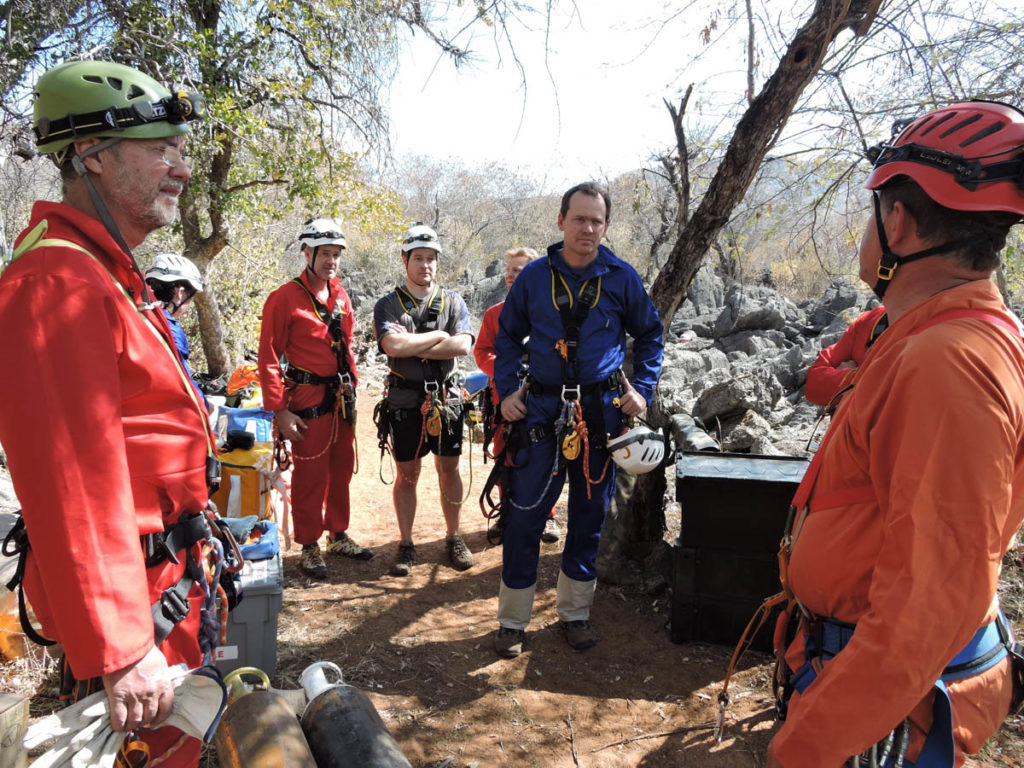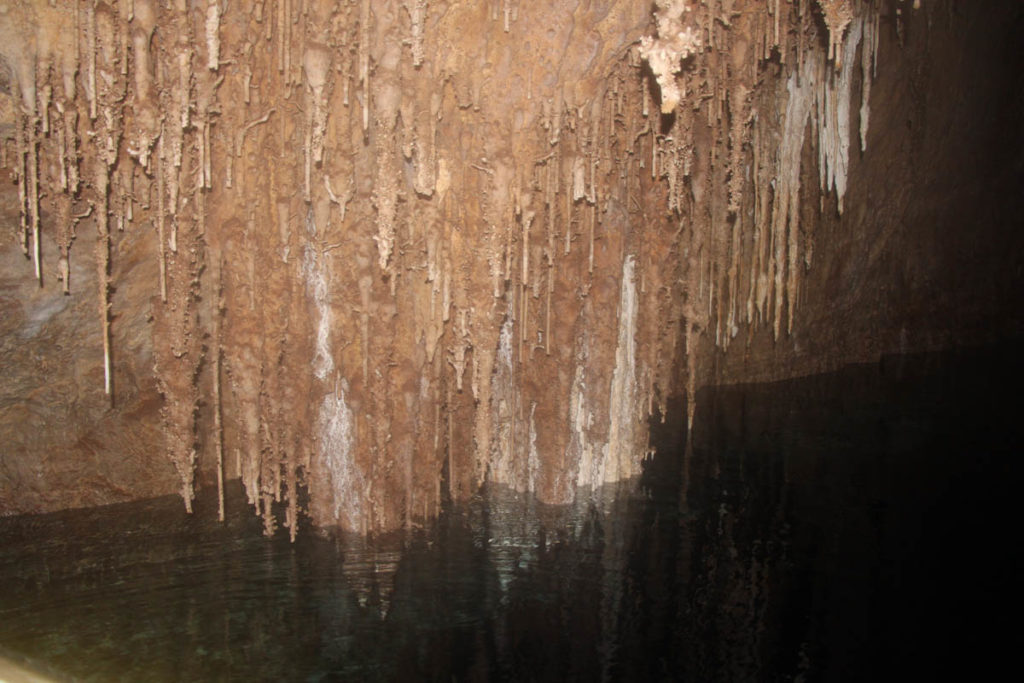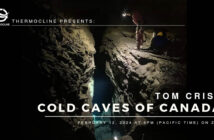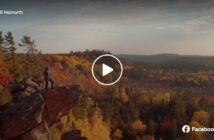Dragons Breath is a huge lake sixty meters underground, breathing out hot air like a giant beast. This is a truly exciting cave with adrenalin, action, the unknown of what’s around the next corner and more. One expects the dragon to appear any time.
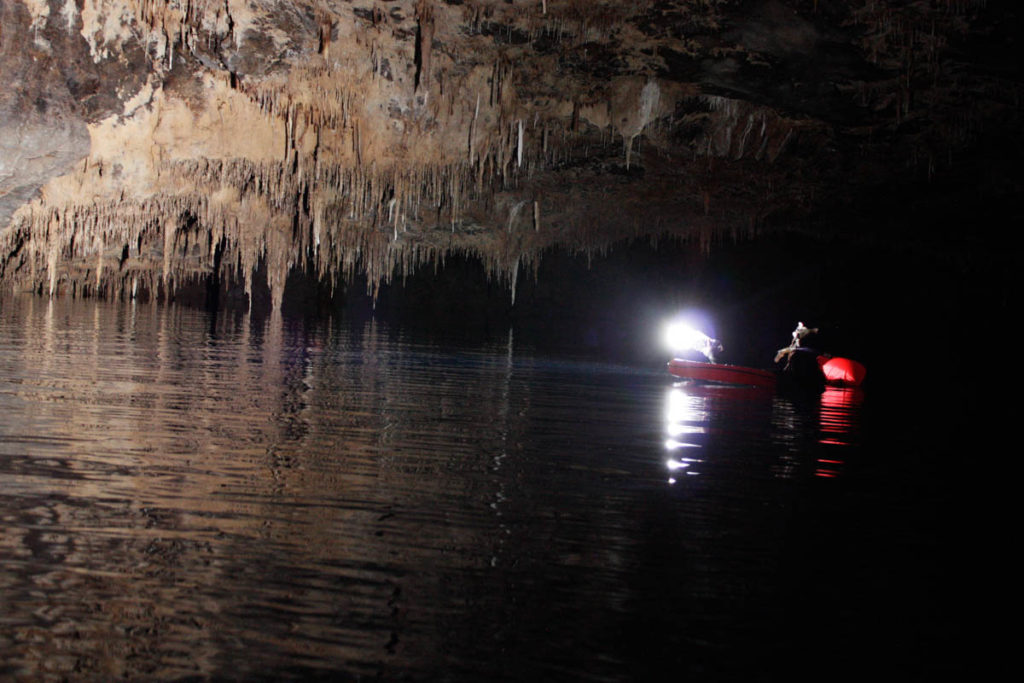
Using boats or floats one can float across the vast water to look at the various formation on the roof of the cave.
Upon entering through the small hole on the surface, you come into a long narrow hallway. A little bit of climbing over rocky drops takes you to a narrow slot. Here you abseil down a pretty tight area. Not a space for the bigger boys. Seven meters later there’s a ledge with a pocket in the back. The narrow passage and pocket are ideal gear storage spaces. Another descent of approximately the same length takes you to what we affectionately called “the closet” as it’s the final gear staging post. Then its fifteen meters by rope down a steep slope to a bridge between two walls. From the bridge you abseil in free space down to the floats on the water. This is some thirty five meters further down.
Of course, all dive gear has to follow the same path to get to the water. Some slots are so tight that it takes ingenious manoeuvring and muscle strength to get the gear through to the next point. Moving approximately one ton of gear into the cave is a mission – not for the unfit – but definitely worth the effort once you see the beauty of this vast underground lake. Of course everything that goes in has to come out again. Inventory includes inflatable boats, rebreathers, stages, weights, rope, breathing air lines, electricity cables and communication lines.
The 2.6 hectare lake of Dragons Breath is the 4th biggest underground lake in the world; its crystal clear waters are pretty impressive. Divers doing their deco near the surface can clearly see the tiny doll like divers at the bottom (131m) in the gin clear water. To see the whole cave you can paddle your boat along the walls being very careful where the stalactites meet the water as you don’t want to break them.
The stalactites on the roof are like some sort of a fairy grotto; there are different types – some of the thin “straw” stalactites litter the bottom as they have broken off the roof in different time periods. The stalagmites on the beach also show times when they have stopped growing and started again in geological times.
As the cave roof arches down, the water made some “curtain” formations, but when the cave gets horizontal again stalactites grow from them, proving at one time the water was much shallower. The water fluctuates in depth depending on rainfall and dry seasons. Sometimes there’s a beach exposed in the far corner, sometimes it is underwater.
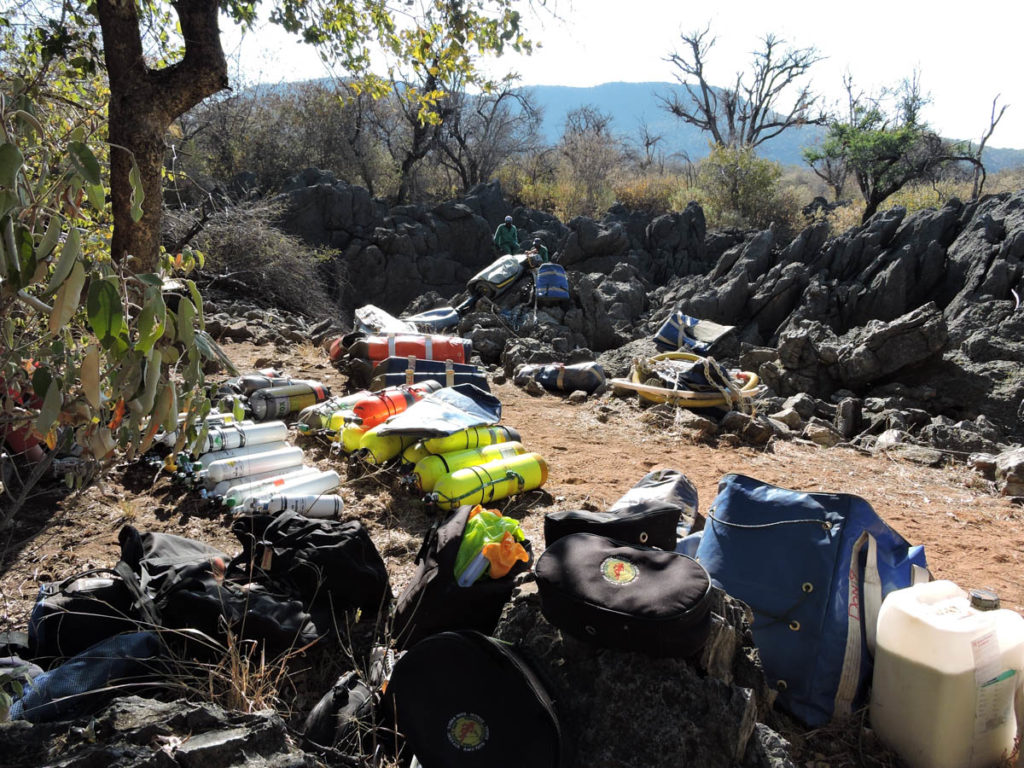
Gear, including rebreathers and cylinders go into specially made padded bags so that it can be lowered down without too much breakage. Everything here excluding the Sofnolime will be taken down.
We have explored the cave to a depth of 131 meters and there are still areas that we have not been able to get to yet. Decompression is taken very seriously, as you’re stuck 60 meters below the surface so you don’t want anything going wrong. There is a rule of a minimum of 3 hours SIT time on the boats and floats before even thinking of trying the climbs out. The climb to surface is always taken very slowly too. The participating divers are all trained for In Water Recompression, as that option would be the best in these circumstances.
We look forward to exploring more of this natural wonder in July 2017.




